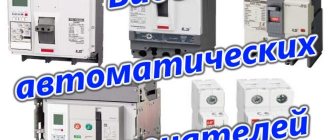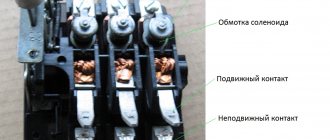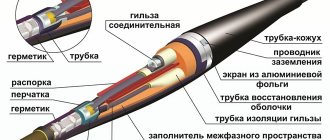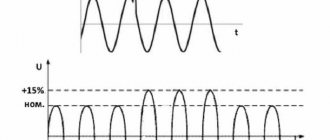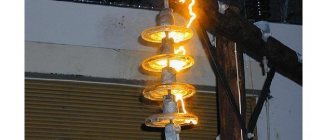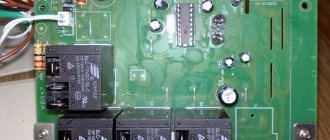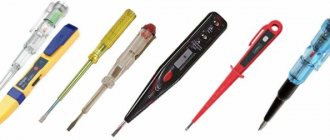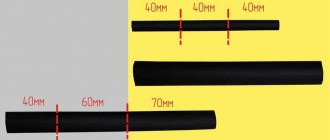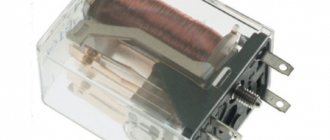The safety, reliability and durability of the connection depend on how correctly the power cable is connected to the power distribution equipment. The end coupling serves this purpose. It can be installed both indoors and outdoors. The product is intended for terminating power cables. Various designs of heat-shrinkable end sleeves meet specific installation conditions.
Heat-shrinkable end coupling
Types of end couplings
Heat-shrinkable end couplings (MKT) come in two types:
- MKT internal installation;
- MKT outdoor installation.
MKT indoor installation
Internal installation of MKT involves installation of a cable connection unit indoors. That is, the cable termination provides a reliable connection where there are no environmental factors. The product cannot be used outside buildings and structures.
MKT outdoor mounting
Installation of MKT for external use is mainly carried out when connecting power cables to distribution cabinets and other objects for similar purposes. Installation of external couplings is carried out in those places where the contact group is exposed to the risk of negative effects of the surrounding space (precipitation, low or high temperature conditions, etc.).
Important! The presence of the letter “B” in the MKT marking means that the product is suitable only for internal use. The letter “N” refers to the product as a type of coupling for external use.
Rules for selecting cable sleeves
When choosing a cable sleeve that would meet the installation conditions, as well as the purpose of the circuits for which it is installed, you need to know the basic criteria for choosing this product:
- Rated voltage of the line in which the coupling is installed. All cable couplings are divided into two categories: high-voltage (from 1 kV) and low-voltage (up to 1 kV). The voltage value is a parameter that is determined from the type of electrical installation;
- The number of cores in the cable and their cross-section. The brand of the cable coupling contains encrypted information about the cross-sectional range of the cable cores for which it can be used. For example, the Stp 10/4*25-50 set is intended for 10 kV networks, and the cable cross-section is from 25 to 50 mm?;
- Type of insulation. The insulating material that is used as the main one must exclude not only breakdowns between phases, but also on the armored layer, which is grounded. Also, the selected coupling and its main insulating material must withstand long-term use and exposure to external factors. One of the most popular today is heat-shrinkable material that changes its shape and size when exposed to temperature. It has high dielectric properties and to install such a coupling you only need a torch or blowtorch;
- Cables that require a coupling can be armored steel strips, wire, or lead sheathed. In sets of cable couplings for armored cables there must be special materials connecting the armor;
- The type of coupling must correspond to the purpose; the end coupling cannot become a connecting coupling and vice versa.
Before purchasing a cable coupling, you need to look at its configuration; usually they are all equipped with lugs or self-breaking sleeves, but if they are not included in the kit, you will have to purchase such products separately.
Advantages of MKT
Installation of cable terminations in the form of ready-made factory-made kits has a number of undeniable advantages over older types of connectors. This is explained by the emergence of new advanced synthetic materials over the past decades.
Stripper for removing insulation from wires
The delivery package of finished products takes into account every step of the technological process for creating the cable end layout. The advantages of universal kits for terminating cable connections are as follows:
- absolute sealing of cores and joints is created;
- heating the heat-shrinkable material compresses the new sheath of the separated ends of the cable until a dense and durable insulating layer is obtained;
- the end coupling has high heat resistance and immunity to aggressive environments;
- ease of installation allows semi-skilled specialists to perform the work;
- couplings ensure environmental safety of the surrounding area;
- the use of accompanying cleaning materials in the installation of couplings allows workers to remain with clean hands;
- guarantees, the service life of MKT reaches 30 years.
Note! Heat-shrinkable end sleeves are quick and easy to install compared to pour-in devices and cold-shrinkable products. However, it is worth noting that MKTs are much more expensive than their analogues.
MKT design
Cable PUGNP
MKT design solutions vary depending on the expected operating conditions. These differences may consist of slight changes in the composition and type of materials. The basic design of the couplings is basically the same.
A standard heat shrink end sleeve consists of the following materials and parts:
- heat-shrinkable tubes;
- insulators;
- bandage thread and wire;
- insulating tape;
- heat shrink cuffs;
- tips with bolt heads breaking off;
- metal pigtail for grounding.
Main parts of the coupling
Contents may vary with the inclusion of various additional materials. Each manufacturer presents the composition of the MKT supply at its own discretion.
MKT device for 3-phase cable
Equipment:
- Coupling KVtp10 and KNtp10.
- The coupling kit contains each and every component required and materials used to install the coupling. To install the couplings, you need a cableman-electrician's tool and a gas electric torch to work with heat shrink.
- Wire glove for insulating the coupling spine.
- Oil separating tubes for insulating oil stopper.
- Heat-shrinkable core insulation tubes.
- Heat-shrinkable tip insulation tubes.
- The cuff is heat-shrinkable to insulate the grounding cable connection area.
- Ground wire.
- Solderless grounding kit (contact strip, roller spring).
- Soldered grounding kit (supplied upon request).
- Iron wire, bandage thread, napkin, electrical tape, mittens.
- Tips (universal bolted or for crimping).
- Electric field leveling mastic.
- Waterproofing sealant.
- Picking list.
Criterias of choice
The choice of heat-shrinkable end sleeve depends on the specific operating conditions. MKT marking contains important information about the purpose of the product. How to read it can be seen in the following example. The coupling brand KVTTP-4X (16-25) means the following:
- K – terminal;
- B – internal installation;
- T – heat-shrinkable;
- TP – heat-shrinkable glove ;
- 4X – 4-wire cable;
- (16-25) – permissible cross-sectional area of one core in mm2.
In addition, the MKT marking may contain additional information about the fire resistance class and the voltage limit. By reading the marking information and comparing it with operating conditions, the desired type of coupling is selected.
MKT delivery set
Types of wire and cable connections
The structure of the electrical coupling is designed based on such parameters as the cross-sectional features of the cables, the number of cores, the voltage rating used and the insulating material of the wires. The difficulty of docking is determined by the degree of demands on reliability and the quality of the connecting unit.
Simple twist
This method of connecting cables is used in structures that are not particularly demanding on power lines. To make the connection more reliable, twist soldering is performed. The joint areas are covered with tubes - most often rubber, but they can also be made of another dielectric.
Individual and group clamps
Sleeve-type terminals are used to connect the ends of coaxial wires. For them, direct contact and RF protection are important.
Crimping sleeves
Such products are made from flexible materials that conduct electricity well: aluminum and copper. Weaves of several strands are inserted into the crimp sleeve from both sides and then the tube is processed with pliers.
Cable sleeves
These products help protect connections from water, chemicals and other harmful environmental factors. In the industrial production of cable couplings, state standards are strictly observed; the manufacturer is responsible for the safety and quality of the joints.
Connecting CM
The coupling for connecting wires is used when installing contact nodes for branching communications. To choose the right product, you need to consider the type of line.
Important! Connectors are commercially available that can withstand extreme temperatures up to 500 degrees above and below zero. This way you can choose a coupling that is suitable for any operating conditions.
Installation of the coupling
MKT installation technology
The installation of the end coupling is carried out by qualified personnel who have undergone special training. Before installation, check the completeness of the delivery according to the packing list. All components of the end coupling are freed from polyethylene and laid out in the order of their installation.
Installation instructions for MKT GUST
This instruction is intended for installation of MKT GUST with the termination of a power cable covered with paper insulation, voltage 6-10 kV, core cross-section from 70 to 120 mm2:
- In accordance with the size specified in the instructions and the required length of the cores, remove the jute cover of the cable.
- The intended place where the cover begins to be cut is marked with several turns of insulating tape, over which a bandage of copper or steel wire is secured. The twisted wire is bent to the cable.
- A circular cut is made along the outer edge of the bandage and the outer cover of the cable is removed.
- The bitumen film is removed from the exposed armor tape using a gas burner.
- Remains of the composition are removed with a rag soaked in white spirit. Then the surface is cleaned with a metal brush.
- A wire bandage is applied at a distance of 50 mm from the beginning of the cut.
- Along the edge of the bandage, a circular armor is cut with a hacksaw.
- Grabbing the cut edge with pliers, roll up the metal strip along the entire length of the exposed area.
- Having retreated 5 mm from the edge of the bandage, make a circular cut and remove the bitumen cushion. The remaining bitumen is burned off with a gas burner. Then the surface is wiped with a rag containing white spirit.
- The cleaned shell is cut through with a hacksaw blade at a distance of 150 mm from the armor cut. The area is cleaned with a wire brush and wiped with a rag containing a solvent.
- The cable sheath and armor are grounded. To do this, a clean area (150 mm) at the end of the armor and pillow is wrapped with a rounded grater plate. The grounding wire is laid out towards the end of the cable and pressed against the grater with one turn of the roller spring.
- Then the ground wire is bent in the opposite direction and secured with the next coils of the spring. The wire is secured with a wire bandage to the cleaned area of the sheath.
- Stepping back 50 mm from the last cut of the shell, make another circular cut. This is necessary to install the heat-shrinkable tube.
- The tube, coated on the inside with glue, is reduced in diameter several times during processing with an open flame of a burner. A dense dielectric coating of the grounding unit is created.
- From the last cut, the sheath is cut with a knife in two parallel lines to the end of the cable. The shell is removed.
- A rope bandage is applied 5 mm from the cut of the shell.
- The soot paper is removed from the entire end of the cable.
- The second bandage is placed at a distance of 20 mm from the edge of the shell.
- Remove the waist insulation tapes, breaking them off on the second bandage. Remove interfacial filling.
- Three wires are spread apart. The cutting tapes are removed from them.
- Heat-shrinkable tubes are placed on each of the cores. They are seated with a burner one by one, following from the cutting root to their ends.
- The cutting area of the cable spine is filled with a special yellow tape, rolled into a cone.
- At the base of the wiring, the wires are tightly compressed and covered with several layers of special tape.
- A heat-shrinkable glove is placed on the spine through the veins and treated with a torch.
- As a result of exposure to flame, the glove material tightly covers the routing root and the end of the shell, forming a dense sealed surface. The yellow tape inside melts and spreads evenly, creating a dielectric space, displacing air from the body of the glove.
- Red tubes are placed on each core. They are also seated with a burner.
- Bolt ends with shear heads are placed on the stripped ends of the cores (50-70 mm).
- The bolts are tightened until their heads are cut off. The cable is ready for connection.
Additional Information. When working with heat-shrinkable tubes, the burner is adjusted so that the flame is blue with a yellow tongue. Pointed blue flames should be avoided. This will help prevent the heat shrink material from burning through.
Burner stroke direction
Control cable couplings
A control cable is often a multi-core cable product, each of the cores of which has its own insulation; its task is not to supply power supply voltage to electrical equipment, but to implement protection, signaling, and control circuits. This type of product also includes communication cables. In this case, lead couplings are used for communication cables, for example MS-20, which restores the protective sheath of the cable along with a single piece. All control cables are laid both indoors and outdoors and therefore very often require protection from mechanical damage. When marking cable couplings for a control cable, there are many, here is an example of the most common set - PSTk (connecting) or KKT (terminal), they are used for control cables with a number of cores from 4 to 37, the cross-section of which does not exceed 10 mm?.
Do you need cable couplings? Send your request and we will complete your order. We will select brands and give the best prices!
Send a request
FAQ
Below are three frequently asked questions from those who want to install heat-shrinkable end sleeves themselves:
- Can other open flame sources be used for heat shrinking?
Answer. MKT manufacturers indicate in the installation instructions the use of only a gas burner. However, it is possible to use a blowtorch if the flame is adjusted correctly.
- Is it possible to carry out the heating process of heat-shrinkable material with short breaks?
Answer. Under no circumstances should heating be interrupted. Violation of the heat shrink technology will lead to a low-quality insulating shell.
- Is it possible to use outdoor terminations as indoor equipment?
Answer. It is strictly forbidden to use internal couplings as external cable routing.
Common mistakes when installing couplings
When installing connections, there are also typical mistakes that impair the performance of the structure.
Contaminated surfaces
The installer must take care of the cleanliness of the tools used and remove dirt in a timely manner. When working in holes or other “dirty” places, be sure to use film.
Violation of connector installation technology
If defects are found caused by inappropriate dimensions of the tube, they must be eliminated with a file and then sanded. The shavings remaining after grinding must be removed.
Uneven thickness of cuff insulation
This is a common case when using thick-walled heat-shrinkable cuffs. To avoid this problem, you need to evenly heat the area being treated. A tin reflector can also help with warming up.
Broken coupling tightness
This happens due to ignoring the sealant. The cause may also be damage to the insulation, in which case it is necessary to install a repair sleeve with an adhesive backing.
Important! The sealant should extend above the edges of the joint.
Air masses in couplings
As with end products, excess ions are produced in this case. When installing couplings, you must carefully follow the technology and take care to avoid common mistakes. In this case, the connection will be reliable and will last a long time.
Common mistakes
Often, failure to follow the rules for cleaning treated surfaces leads to the creation of fragile and short-lived protective coatings for wiring and connecting power cables.
Failure to follow the rules for sequential heating of heat-shrinkable material creates the risk of electrical leakage and destruction of the cable connection unit.
Heat-shrinkable cable terminations are today the most effective and reliable solution for wiring and connecting cable networks. The seemingly excessive costs of purchasing and installing expensive MKT will have a significant economic effect in the future.
Couplings for armored cable
Armored cable is used very often when organizing power supply to equipment, since it is not afraid of mechanical shocks during installation and operation. For this type of cable products, a special type of cable couplings is used, which are marked with a capital or small letter “B”; some manufacturers may not mark their products in a different way. The cable coupling for armored cable faces the task of not only high-quality and reliable connection of cores with maximum sealing, but also restoration of impact resistance and mechanical protection of the area where the coupling is installed.
At the same time, cable couplings for armored power cables can be designed for standard 3, 4, or 5 cores, but also designed for installation on a single-core cable.
In order to ensure and restore resistance to mechanical damage, cable couplings for splicing, branching or terminating armored cables are equipped with metal “stockings” and grounding conductors. Here are several brands of products for armored cable 3 PKV(N) Tpb1, 3PSTb1, 4STp1 (universal).
